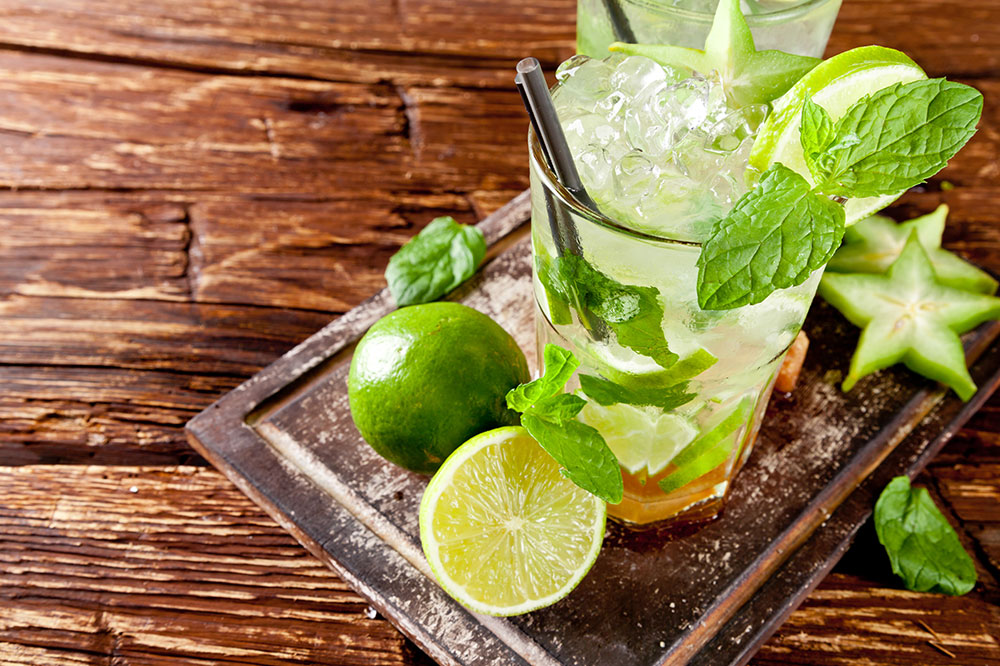Think your cocktail list contains the most important — and lucrative — drinks on your menu? If so, you’re ignoring an opportunity to add another star refreshment to your repertoire: the handcrafted, alcohol-free “mocktail.”
Though the Shirley Temple and Roy Rogers have been gracing restaurant drink menus for decades, there’s nothing “kiddie” about these faux cocktails. Whether it’s a house-made basil soda or a spiked cider alternative, the craft mocktail genre is picking up in popularity. But its status as the new buzz-worthy beverage isn’t the only reason you should consider creating your own.
Below, we present you with more reasons your menu should absolutely include mocktails.
1. There’s definitely money in mocktails.
Quick, ask yourself: How many people in your restaurant request plain water every day? Now consider how many people order a soda and request refills (which are often offered for free).
Each of these people could be spending a little more — and having a more delicious, personalized experience — by drinking your house-made mocktails.
Because they are specialty drinks, mocktails can carry a slightly higher price tag than a traditional soda, despite using ingredients you may already have on hand. And because they can be created with items you’re already keeping in your bar or kitchen — say, that surplus rosemary or the bacon left over from brunch — crafting your own mocktails can be an elegant way to limit waste.
But just because mocktails can be cheaper to make doesn’t mean you should skimp on quality of each drink.
The guests who will be enjoying your mocktails aren’t just kids looking to emulate mom and dad. They’re adults with sophisticated palates who want a beverage that quenches their thirst and tickles their taste buds.
To ensure they leave feeling like they’ve had the specialty cocktail experience, avoid the safe, all-sweet route with your mocktails. Instead, experiment with unexpected flavors, integrating herbs, savories, and salts in with the sweet to create a complex treat anyone, drinker or not, would enjoy.
2. Offering mocktails creates a more inclusive environment.
Not everyone drinks. It’s a fact you need to consider when operating a restaurant, especially as the number of non-drinkers is increasing.
Whether they dislike the taste, don’t drink for religious or personal reasons, or just want to avoid the extra calories and carbohydrates a shot of liquor adds, these non-drinkers shouldn’t be excluded from having a delicious beverage that augments their meal.
When you include mocktails on your menu, you’re communicating to these guests — and to all the young patrons out there who are just a little too old for juice, but a little too young for wine — that their experience with you is important.
To really hit home that you want each guest to have the ideal experience, try developing mocktails that are designed to pair perfectly with specific dishes you serve. Then encourage your staff to suggest both alcoholic and non-alcoholic pairings when discussing the menu with each table.
Because this non-alcoholic alternatives trend in restaurants is just starting to gain traction, many guests may not even think to ask their server about options other than the traditional soda. But once they know you have a non-alcoholic option that will pair perfectly with their steak, chances are good they’ll insist on ordering one — and keep coming back to see what other mocktail matches you can whip up.
3. Mocktails encourage “temporary abstainers” to return for traditional cocktails in the future.
There are plenty of people who abstain from alcohol altogether. But there’s also a group of customers who are “temporary abstainers,” or those who cannot or are not drinking at the moment. This may include women who are pregnant or nursing, designated drivers, people on antibiotics, people in training for sporting events, and a whole host of others.
These tend to be the guests who feel the pinch of not having a martini or margarita the most — and that’s exactly why they’ll value the non-alcoholic alternative. Instead of lamenting their lack of a cocktail, these guests can discuss the intricacies of their own beverage right along with those who are sampling your sangria.
Just because these particular customers aren’t drinking today doesn’t mean they won’t drink ever. If they’re impressed by the complexity and taste of your mocktails, chances are they’ll want to return to try the “adults only” varieties.
Plus, the resident non-drinkers and designated drivers will always remember your restaurant as the one that catered to their needs — and will encourage others to see how you can improve their dining experience, as well.
Want more ideas for menu planning that can make you money? Download our free eBook “Menu Magic: How You Can Increase Your Restaurant Sales” today!






